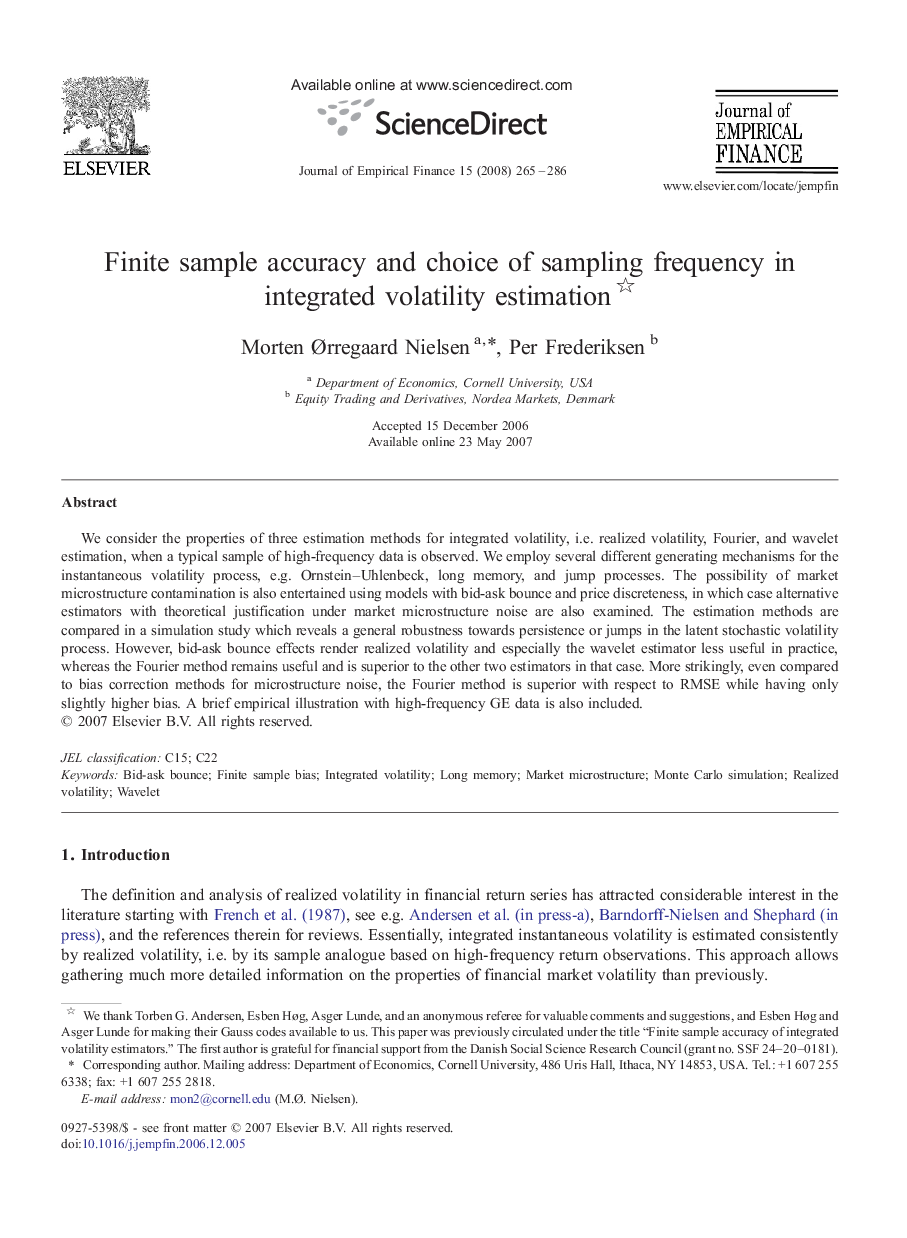| Article ID | Journal | Published Year | Pages | File Type |
|---|---|---|---|---|
| 958513 | Journal of Empirical Finance | 2008 | 22 Pages |
We consider the properties of three estimation methods for integrated volatility, i.e. realized volatility, Fourier, and wavelet estimation, when a typical sample of high-frequency data is observed. We employ several different generating mechanisms for the instantaneous volatility process, e.g. Ornstein–Uhlenbeck, long memory, and jump processes. The possibility of market microstructure contamination is also entertained using models with bid-ask bounce and price discreteness, in which case alternative estimators with theoretical justification under market microstructure noise are also examined. The estimation methods are compared in a simulation study which reveals a general robustness towards persistence or jumps in the latent stochastic volatility process. However, bid-ask bounce effects render realized volatility and especially the wavelet estimator less useful in practice, whereas the Fourier method remains useful and is superior to the other two estimators in that case. More strikingly, even compared to bias correction methods for microstructure noise, the Fourier method is superior with respect to RMSE while having only slightly higher bias. A brief empirical illustration with high-frequency GE data is also included.
